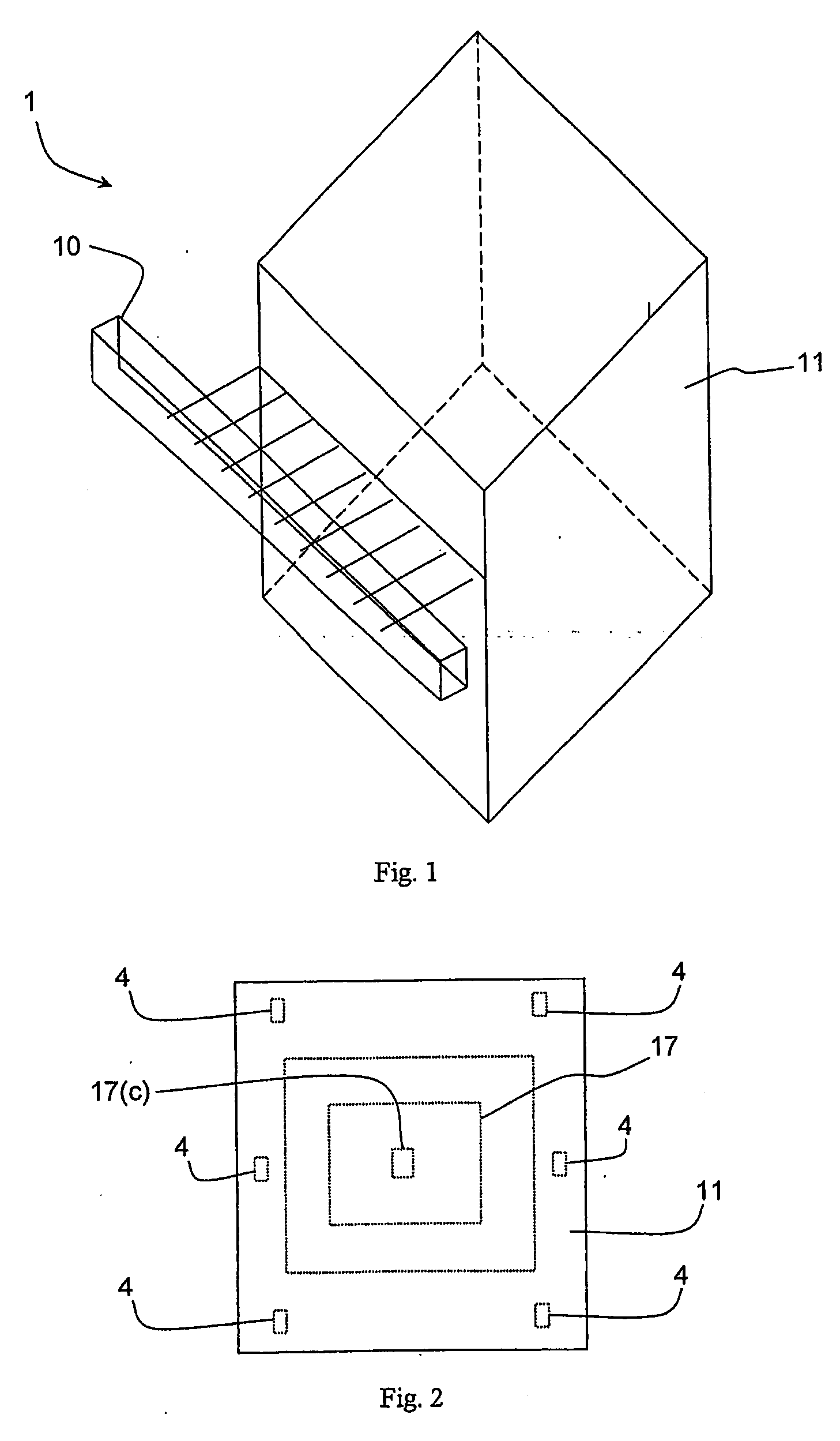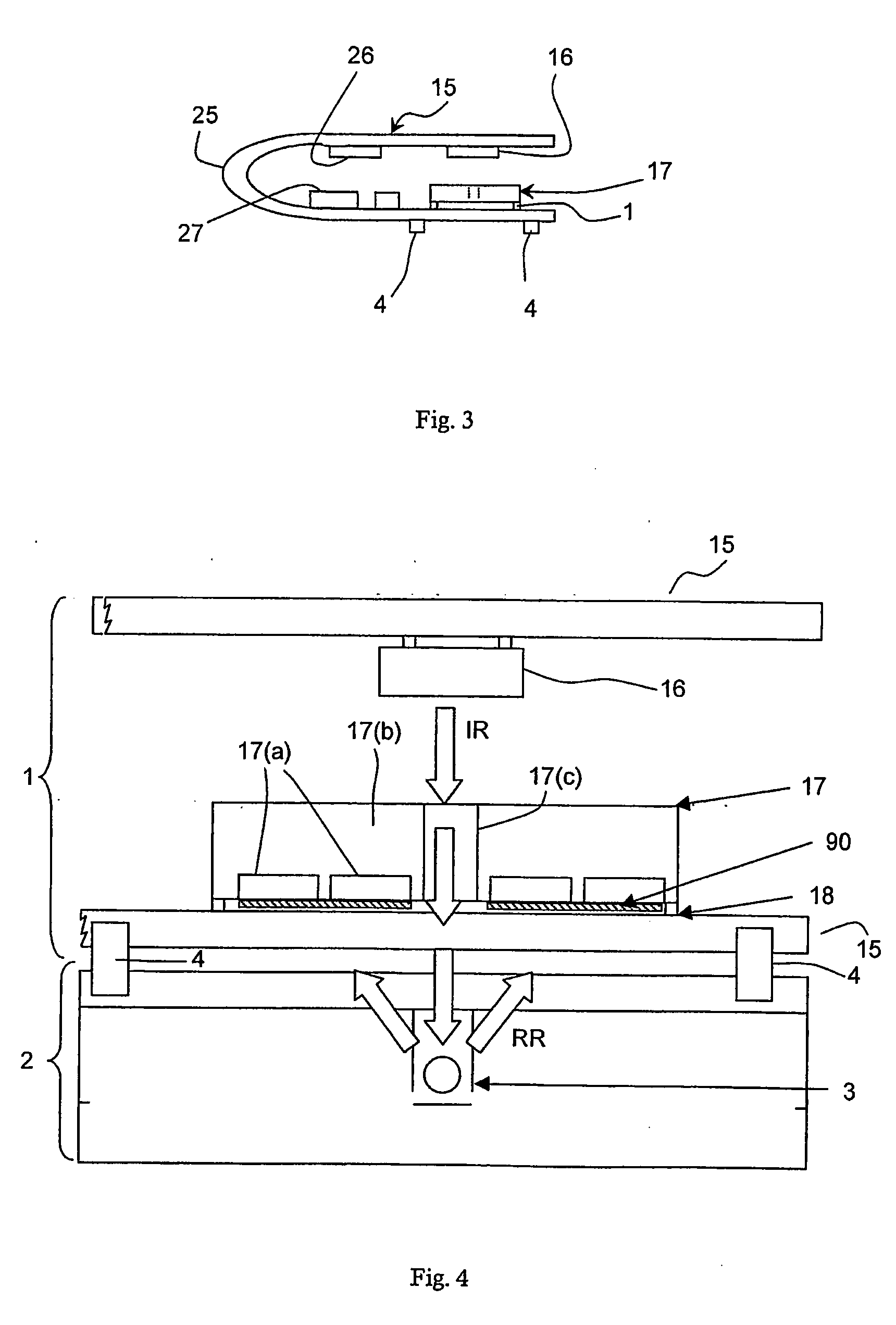Optical Detector
a detector and optical technology, applied in the field of optical detection, can solve the problems of short path length for light, insensitive ce with some analytes, and rapid separation of many hundreds of different compounds
- Summary
- Abstract
- Description
- Claims
- Application Information
AI Technical Summary
Benefits of technology
Problems solved by technology
Method used
Image
Examples
Embodiment Construction
Brief Description of the Drawings
[0041]The invention will be more clearly understood from the following description of some embodiments thereof, given by way of example only with reference to the accompanying drawings in which:
[0042]FIG. 1 is a diagrammatic perspective view from above of an optical detector of the invention, and
[0043]FIG. 2 is an underneath plan view;
[0044]FIG. 3 is a general side view, before encapsulation, showing the arrangement of a substrate of the detector;
[0045]FIG. 4 is a cross-sectional diagram illustrating the detector in more detail and showing how it is coupled with a microfluidic system to detect a sample in a channel of the microfluidic system;
[0046]FIG. 5 is a cross-sectional diagram illustrating an alternative embodiment in a similar manner; and
[0047]FIG. 6 is a cross-sectional diagram showing a further optical detector of the invention.
DESCRIPTION OF THE EMBODIMENTS
[0048]Referring to FIGS. 1 to 4 there is shown an optical detector 1 which acts as a ...
PUM
| Property | Measurement | Unit |
|---|---|---|
| wavelength | aaaaa | aaaaa |
| detection wavelengths | aaaaa | aaaaa |
| IR wavelength | aaaaa | aaaaa |
Abstract
Description
Claims
Application Information
 Login to View More
Login to View More - R&D
- Intellectual Property
- Life Sciences
- Materials
- Tech Scout
- Unparalleled Data Quality
- Higher Quality Content
- 60% Fewer Hallucinations
Browse by: Latest US Patents, China's latest patents, Technical Efficacy Thesaurus, Application Domain, Technology Topic, Popular Technical Reports.
© 2025 PatSnap. All rights reserved.Legal|Privacy policy|Modern Slavery Act Transparency Statement|Sitemap|About US| Contact US: help@patsnap.com



